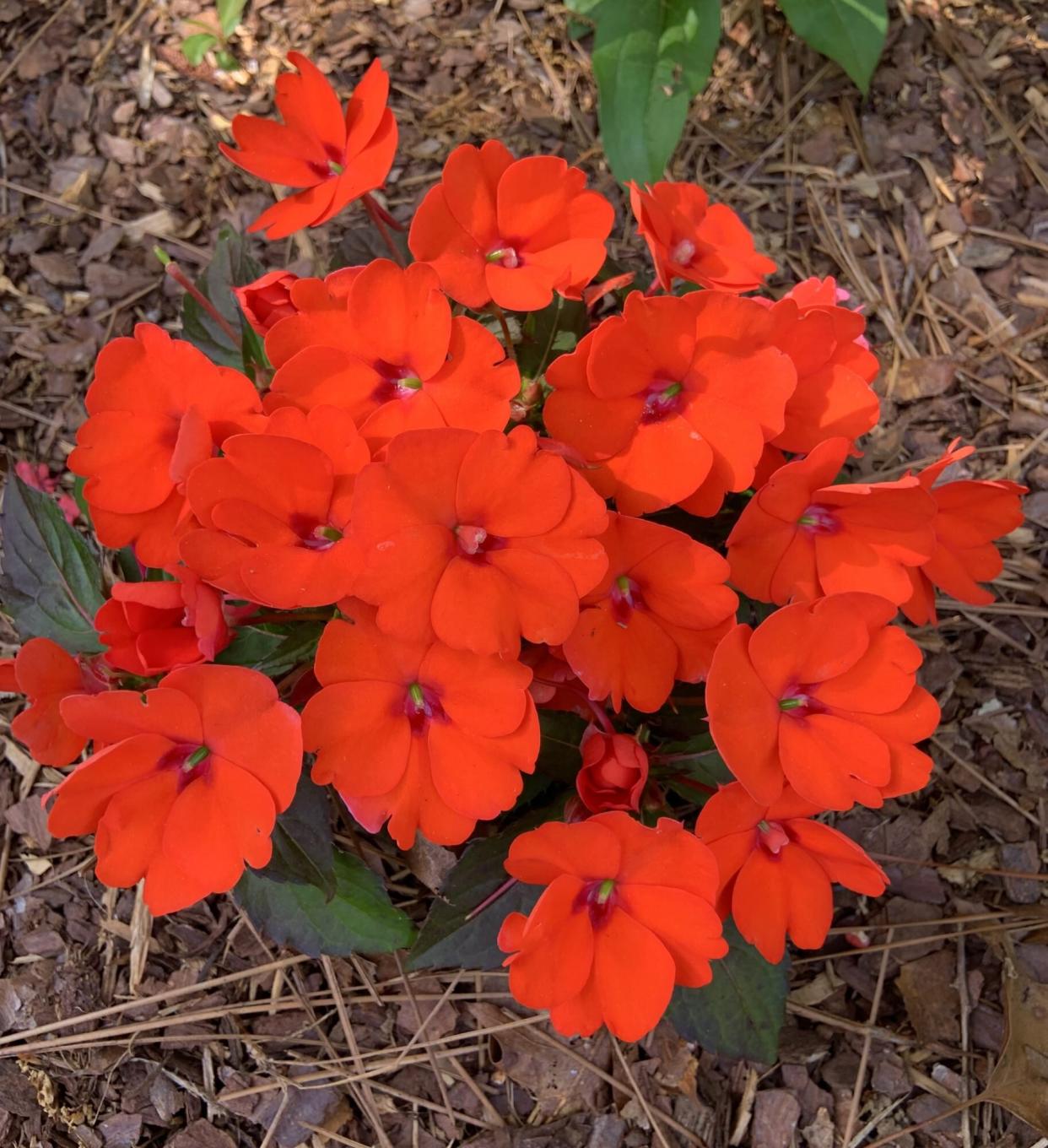SunPatiens Are Low-Maintenance Super Bloomers That Love the Sun

Steve Bender
Every spring presents me with a monumental challenge – how to get non-stop color in my front yard flower bed. The bed gets half-sun, half shade, so anything that needs full sun wimps out. For years, sun coleus was my go-to. It never failed, but in the interest of experimentation to keep my brain's neurons firing for several moments on end, I decided to find a substitute. I did and it's great.
My discovery? SunPatiens. If the name sounds vaguely familiar, that's because these plants were developed from the old-fashioned garden impatiens (Impatiens walleriana) that were such hits back in the 1960s, 70s, and 80s. But Land o' Goshen, are they better.
(Side note: The name "impatiens" is both singular and plural. There is no such thing as an "impatien." If you email me asking why your impatien died, you will be shrouded and banned from further communication.)
In their defense, garden impatiens had filled a gaping void. They were one of the few annuals that bloomed well in shade, did so from spring until frost, and offered a raft of bright colors. However, without frequent watering, they fried in strong sun. Later on, a devastating fungus called downy mildew wiped out entire sweeps of them overnight. People were upset. Something had to be done.
Back to the Drawing Board
Gardeners turned to New Guinea impatiens, a hybrid of Impatiens hawkeri. They resisted downy mildew, took more sun than garden impatiens, had bigger flowers, and often sported colorful, variegated foliage. But they too melted in full sun and needed lots of water. Plus flowers could be sparse. Back to the drawing board.
Sunpatiens answered the call. They resulted from crosses between New Guinea impatiens and a number of Indonesian impatiens species breeders refuse to identify. (It's very hush-hush and the plants are patented. They're grown from cuttings, not seed.)
What is so great about SunPatiens? Let me count the ways.
They grow well in sun, part sun, or shade (though they flower less heavily in shade)
They bloom continuously from spring (plant after your last frost) until fall
Flowers are huge, come in a wide range of colors, and bloom so heavily they nearly hide the foliage
While I wouldn't call them drought-resistant, they need much less water than previous impatiens. I water mine two or three times a week in hot weather. If you come home and they're wilted, give them a quick soaking and they'll revive without dropping flowers, flower buds, or foliage
They provide instant impact
They do great in borders, containers, and hanging baskets
My only qualm with SunPatiens is that those belonging to the Vigorous Series grow to the size of small shrubs – 36 inches tall and wide. While this means you need fewer of them for the average garden, they made need cutting back in summer lest they engulf other plants. I prefer the Compact Series. These mounding plants grow 16 to 24 inches tall and about 16 to 24 inches wide. I adorned my garden with Compact 'Electric Orange' (pictured above) to complement the yellow, blue, and purple perennials around them.
You'll find Sunpatiens at most local home and garden centers. But remember – do not ask for an impatien lest outraged employees escort you from the premises!

